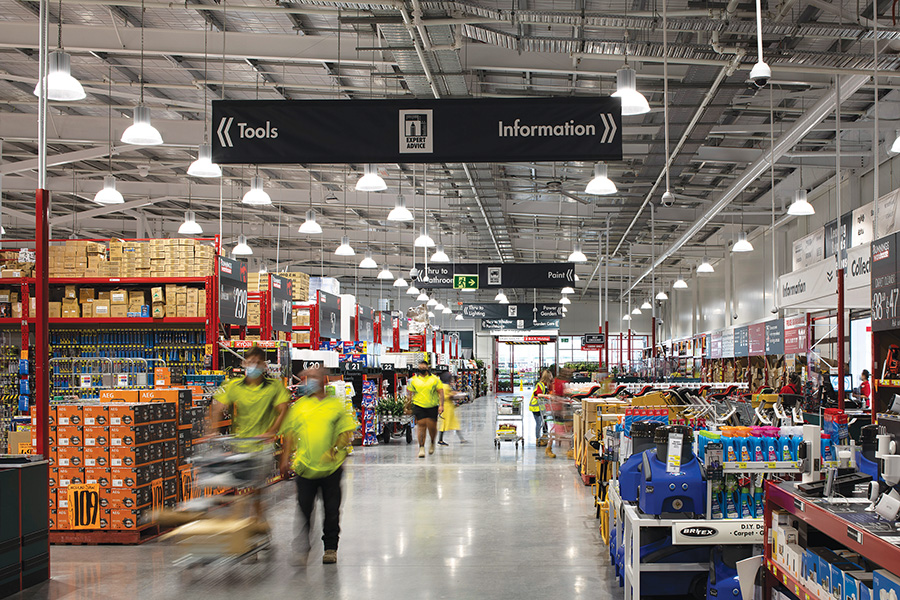When authorities, whether local, state or federal, consider shopping centres, they often fail to link the centres with the community at large; instead, they are seen as property developments owned and managed by powerful corporations.
There is a move in NSW to change the rating system for shopping centres. The implications for the community in general are huge. Any major increase in rates, legitimately charged to retailers, small businesses and large ones alike and passed on in operating costs, will ultimately trickle down to the consumer at large in the form of higher prices.
To ‘single out’ shopping centres, to separate them from other property in order to accord them a higher rateable value, is both unethical and immoral. It is nothing more than a grab for money which is indefensible and unconscionable.
In this article, Angus Nardi comments on the current moves regarding rateable values for shopping centres.
NSW is at risk of heading into dangerous territory on council rates.
This risk arises from the fact that, at any given time, there’s a policy thinker lurking in the shadows who believes, directly or indirectly, that shopping centres are ‘fair game’.
They will be hiding behind spurious evidence and craft words that make their proposals sound legitimate and credible.
A growing basis of this legitimacy is a view that we have sufficient ‘capacity’; including in a relative sense to others.
This could mean the ‘capacity’ to, say, pay additional tax, deal with additional regulation, or have risk distributed in our direction in order to relieve small business.
The subtext is that we’re large, robust and, at the end of the day, better equipped to deal with such issues. This is, of course, egged on by certain external stakeholders.
A poster-child of this sham policy approach is council rates, with little overall interest from state governments (who generally set the overall regulatory framework) to intervene to have it properly and fairly rectified.
Evidence of this issue is the fact that the growth of council rates is increasingly disconnected from the growth of statutory valuation, and it’s on the rise.
In other words, councils are simply setting higher rates for shopping centres, and on spurious grounds.
Depending on the jurisdiction, state government legislation enables councils to set a different rate for a specific shopping centre. These rates don’t have to be pegged to anything, or relate to the resources used or services rendered.
It’s just a cash grab.
Chart 1 illustrates the problem, which comes from a sample of our members’ centres across multiple jurisdictions, centre types and locations.
From 2011-2015, it can be clearly seen that the growth of council rates massively outstrips both statutory valuation (by around 25 points) and MAT growth (by around 15 points). Council rates also outstrip land tax.
The chart is based on real numbers and dollars, as opposed to a theoretical analysis of published tax rates, rules or exemptions.
And I can assure you that there has also not been a corresponding increase on the demand on council services from, or the services provided to, the shopping centres in this sample.
In certain jurisdictions, we also know this kind of council rates growth is also coming off a high base. This is particularly the case in South Australia and Western Australia which have the highest council rates in the country.
It is for this reason that a recent draft proposal on council rating by the NSW Independent Pricing and Regulatory Tribunal (IPART) adds fuel to the fire.
IPART is undertaking a review into council rating, which is in the context of the NSW Government’s council review and amalgamation program.
The NSW Premier, Mike Baird, requested IPART to do the review in December 2015.
A final report will be presented to the Local Government Minister, currently Paul Toole, in December 2016.
With an opportunistic rationale, IPART has proposed a shift from unimproved land valuation to capital improved valuation for rating purposes.
This proposal reflects a recommendation of a previous Independent Local Government Review Panel in 2013, albeit a recommendation that was limited to residential rates to deal with perceived inequities between houses and apartments.
IPART’s draft recommendation provides no such qualification that a shift to capital improved value should be limited to residential rates.
Shopping centres (and their retailers) beware. IPART also proposes that it should be optional for councils to apply capital valuation if they choose, and councils can even apply unimproved valuation for some properties, and capital valuation for others.
Some of IPART’s analysis is concerning, particularly in relation to its justification as to what valuation means in the context of council rates.
As an example, IPART suggests that “the market value of the ratepayer’s property, rather than their unimproved land value, will usually better reflect their share of demand for and share of costs of providing council services”.
Further, IPART suggests that “market value tends to be a more equitable basis for rating, in that it more closely aligns with the benefits the ratepayer receives from council services as well as their ability to pay”.
For a shopping centre, both of these statements, or ‘justifications’, make little sense.
Given the factors that drive capital value, it takes serious grey matter to link value (or growing value) to council services, particularly also if only one ratepayer group is being singled out.
In this sense, IPART proposes, as noted above, a bit of a ‘choose your own adventure’ for councils to apply both valuation methods (and the meaning of the valuation method) in terms of the demand, costs and the benefit of council services.
So a potential outcome could be an unimproved value rating basis for houses, and a capital value basis for shopping centres.
Further, IPART notes that the total rates collected by a council “would remain unchanged irrespective of the valuation method chosen by the council”.
If there’s no more overall money, this raises the question as to what’s driving IPART’s recommendation, and why would councils support such an approach?
It’s difficult not to conclude that it comes down to it being more politically palatable for councils to more easily redistribute their rate burden to shopping centres, and away from their residents.
So while councils can already ignore the underlying valuation when applying rates, the proposed capital valuation approach possibly lets them do it more simply, and go even further.
As example, it would be easier to justify a $200,000 rate increase on a $200-million asset than on a $20 million piece of land.
Proportionally, it’s much smaller and also makes such an increase seem relatively trivial.
The proposed draft approach by IPART must be challenged on various grounds.
NSW councils starting to tax capital improvements, and making a judgement on how this relates to the demand, cost and benefits of council services, is dangerous territory.
Fundamentally, it is a departure from the idea of a tax on land, which is technically efficient due to land being immobile.
Shifting the deck chairs to a capital improved valuation system is also taxing more of the ‘capital’ success of shopping centres in relative terms.
When compared with residential property, shopping centres generally have a much higher proportion of improvements against the unimproved land value.
Then there’s the issue of ‘capacity to pay’, as if shopping centres and their retailers have endless sums of cash for ‘price-taking’ issues such as rates and other statutory charges.
As a recoverable outgoing, rates can have a significant effect on retailers and add to their occupancy costs, which can be particularly problematic in areas with flat sales growth.
Applying a ‘capacity to pay’ approach based on capital valuation can also mean that a retailer in a shopping centre is the subject of higher council rates than a comparable retailer in a main-street environment. There is no equity (a key tax principle) in this scenario.
IPART’s draft proposal also blatantly ignores a 2013 inquiry into land valuation, conducted by the Parliamentary Joint Standing Committee on the Office of the Valuer-General, chaired by Matt Kean MP (who is now the NSW Parliamentary Secretary for Treasury).
This inquiry, to which we lodged a submission and appeared before the public hearing, made a number of sensible recommendations to improve the valuation system.
A key finding was that “land value is the appropriate basis of valuation for rating and taxing purposes”.
But this Parliamentary Committee report isn’t listed as a report considered by IPART on its review, nor is the Government’s response to this inquiry.
A further critical oversight is what happened to shopping centres in places such as Victoria when councils transitioned from an unimproved valuation system to a capital improved system.
Rates for shopping centres increased significantly, with one that I’m aware of having to enter into a multi-year transitional agreement because the increase was so significant.
It is for these reasons that we’re putting this proposal under serious scrutiny, with the obvious hope that it’s not in IPART’s final report or adopted by the NSW Government.
IPART’s justifications, particularly linking capital value to services, are simplistic, but run the risk of becoming legitimate, or a rating ‘truism’.
It’s a critical time to get the policy framework right, given it’s our experience that the NSW Government is loath to intervene or provide safeguards or limitations to curtail the enthusiasm of councils to impose high rates on shopping centres.
Once the rating framework is operational, it’s not like dealing with a single government or central agency to try and prevent things getting out of hand. Keeping account of council rates is a 24/7 exercise, particularly given there are so many of them, and the details are often buried deep in reports and not well publicised.
It reminds me of a time I objected to a council rate increase, where I was met with a Councillor speech pandering to the public gallery, essentially saying I was wasting my time. Then just like that, a show of majority hands, and the centre was up for an additional $250,000.
And despite having no analysis, and me providing them with analysis to the contrary, I was effectively assured that the centre (and their retailers) would have the ‘capacity to pay’.
IPART’s draft paper is, at the time of writing, out for consultation, and a new rating framework will ultimately be submitted to the NSW Government for final consideration.
We have a critical opportunity to try and reverse IPART’s draft approach and ensure a fairer platform for shopping centres. This includes IPART’s other concerning draft recommendations, such as enabling the creation of more rating sub-categories. It has become all too easy for a local council to hit shopping centres with higher rates, and we have to ensure that it doesn’t get any easier.





















